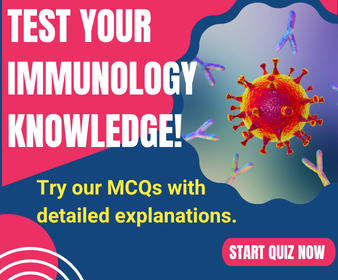In this article, I briefly describe how microorganisms develop drug resistance to a variety of drugs.
Drug Resistance
Drug resistance develops when disease-causing microorganisms, such as bacteria, viruses, fungi, or parasites, develop the ability to survive exposure to drugs that were once effective in killing them or stopping their growth. This phenomenon undermines the effectiveness of treatments. This makes common infections harder to cure and increases the risk of severe illness, eventually leading to death. Drug resistance often arises due to genetic mutations or the acquisition of resistance genes. The overuse or misuse of antimicrobial agents frequently drives it.
Development of Penicillin Resistance
Penicillin resistance can arise when certain bacteria produce an enzyme called penicillinase, which deactivates penicillin by converting it into penicilloic acid. In addition to naturally resistant strains, some bacteria that are usually sensitive to penicillin may develop resistance through genetic adaptation that leads to penicillinase production. Among large populations of penicillin-sensitive bacteria, rare resistant mutants—perhaps one in a hundred million—may exist. Under normal conditions, these mutants remain outnumbered. However, in the presence of penicillin, the sensitive bacteria are inhibited. This allows the resistant ones to survive and multiply, eventually becoming dominant. This evolutionary pressure has driven the development of synthetic penicillins designed to resist degradation by penicillinase.
The Other Mechanisms of Drug Resistance
Drug resistance can arise through several mechanisms that enable microorganisms to survive the effects of therapeutic agents. One common strategy involves enzymatic changes, such as the overproduction of a target enzyme that surpasses the drug’s inhibitory capacity or the synthesis of a structurally altered enzyme that remains functional but is no longer affected by the drug.
Modifications to the drug’s target site also contribute to resistance, as seen with changes in ribosomal proteins that prevent effective drug binding. Additionally, cells may develop alternative metabolic pathways that bypass the step normally inhibited by the drug or resist drugs that act as metabolic analogs through competitive inhibition. Resistance can also result from decreased drug permeability, often due to alterations in the cell membrane that block drug entry. These adaptive strategies collectively enable microorganisms to evade the inhibitory effects of drugs, posing a significant challenge to effective treatment.
Drug Resistance is Transmitted
The widespread use of antibiotics has led to the elimination of drug-sensitive bacteria, allowing resistant strains to thrive. Initially, it was believed that resistance emerged due to mutations in a single bacterial gene. However, more recent findings, particularly in some Gram-negative bacteria, suggest that resistance may also involve an additional gene that helps protect the bacteria from the effects of antibiotics. For instance, in penicillin-resistant staphylococci, a specific gene enables the production of penicillinase, an enzyme that neutralizes the drug. In some cases, bacteria already possess resistance genes at the time of infection and proliferate as antibiotics suppress sensitive strains. In other cases, resistance genes are acquired during treatment through conjugation with other bacteria.
Gene transfer in bacteria can occur through transformation, conjugation, or transduction. In 1958, Japanese scientists Akiba and Ochiai were the first to independently report the transfer of antibiotic resistance through conjugation. They discovered both antibiotic-sensitive and antibiotic-resistant strains of the same serotype in patients suffering from enteric infections. These patients are treated with drugs such as sulfonamides, tetracyclines, streptomycin, or chloramphenicol. Their research revealed that antibiotic resistance was being transferred from a reservoir of Escherichia coli in the intestinal tract to Shigella dysenteriae, the causative agent of the infection. Since this initial finding, conjugative transfer of antibiotic resistance has been documented in various bacterial species across different regions of the world.
The antibiotic resistance factor, known as the R factor, is located on plasmids—small, extrachromosomal, self-replicating DNA molecules. The spread of these resistance factors is particularly significant in regions where enteric infections are prevalent. Certain bacterial species, such as Enterobacter, Klebsiella, Salmonella, and Shigella, are highly effective at acquiring R factors from Escherichia coli donors. In contrast, species like Pasteurella, Proteus, and Serratia are less efficient recipients of these resistance elements.
Prevention of Antibiotic Resistance
To combat antibiotic resistance, significant efforts are focused on understanding its underlying mechanisms and implementing strategies to prevent its spread. One key approach is to avoid the unnecessary use of antibiotics, especially in situations where they offer no real clinical benefit. It is also important to refrain from using antibiotics typically reserved for systemic infections in topical treatments. Ensuring the correct dosage and selecting the appropriate antibiotic can help eliminate infections more effectively. This also reduces the risk of resistance. When possible, combinations of proven antibiotics should be used. If an organism shows signs of resistance to an initial drug, switching to an alternative antibiotic is essential.
Conclusion
Drug resistance occurs when microbes like bacteria, viruses, fungi, or parasites evolve to withstand drugs that once killed them or halted their growth. This reduces treatment effectiveness, making infections harder to treat and increasing the risk of serious illness or death. It typically results from genetic changes and is often fueled by the overuse or misuse of antimicrobial drugs.
Penicillin resistance occurs when bacteria produce penicillinase, an enzyme that deactivates the drug. Though rare, resistant mutants can thrive when penicillin kills sensitive bacteria, leading to their dominance. This has prompted the development of penicillinase-resistant synthetic penicillins.
Widespread antibiotic use has eliminated sensitive bacteria, allowing resistant ones to spread. While resistance was once thought to stem from a single gene mutation, some Gram-negative bacteria show that it can involve additional protective genes. For example, penicillin-resistant staphylococci produce penicillinase due to a specific gene. Resistance can either pre-exist or be acquired during treatment through gene transfer from other bacteria.
Gene transfer in bacteria can occur through transformation, conjugation, or transduction. Antibiotic resistance, carried on plasmids called R factors, spreads easily in areas with common enteric infections. Bacteria like Enterobacter, Klebsiella, Salmonella, and Shigella readily acquire R factors from E. coli, while others like Pasteurella, Proteus, and Serratia do so less efficiently.
To fight antibiotic resistance, it’s crucial to understand its causes and adopt preventive measures. Key strategies include avoiding unnecessary antibiotic use, especially for non-serious cases, and not using systemic antibiotics for topical treatments. Proper drug selection, correct dosing, and using effective combinations can help prevent resistance. If resistance occurs, switching to another antibiotic is essential.
You may also like:
- Antibiotics inhibit nucleic acid and protein synthesis in bacteria
- Antibiotics inhibit cell wall synthesis of microorganisms

I, Swagatika Sahu (author of this website), have done my master’s in Biotechnology. I have around fourteen years of experience in writing and believe that writing is a great way to share knowledge. I hope the articles on the website will help users in enhancing their intellect in Biotechnology.



